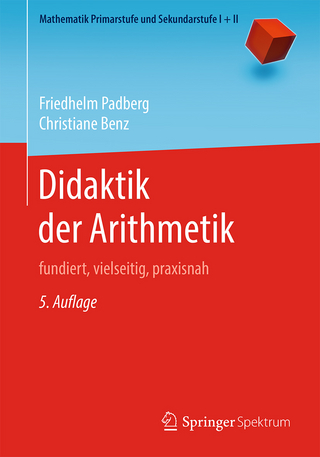
Novel Properties of Living and Other Super-Complex Systems
CRC Press (Verlag)
978-1-138-00040-7 (ISBN)
The work will be of interest to scientists, researchers, and practitioners in the fields of cybernetics, systems sciences, science of complexity, networks science, information science and engineering. Professionals in the field of medicine, psychology, social sciences, economics and military combat management will also find the book beneficial.
Vadim I. Kvitash, MD, PhD, FAAAAI, FACAAI, FAIVAIS, is currently a clinical faculty member at the University of California School of Medicine at San Francisco. He also serves as a consultant in Allergy and Clinical Immunology for the Department of Pediatrics at California Pacific Medical Center, and as an affiliate with St. Mary’s Hospital and St. Francis Memorial Hospital in San Francisco. For eight years, Dr. Kvitash served as Co-Director of the Allergy Clinic at the Mt. Zion Hospital and Medical Center in San Francisco. Over the years Dr. Kvitash has never ceased to work on his innovative and pioneering scientific research projects and presented his results in many national and international conferences. To date, he has published 122 scientific papers in peer-reviewed publications. Dr. Kvitash is a recipient of many national and international honors which include International Award for AIDS Research (1987), Distinguished Award for Outstanding Contributions Furthering Athletic Training Education (1991), Albert Einstein Gold Medal for Outstanding Achievements (1997), Ukrainian National Academy of Sciences Honorary Medal (1998) and Congressional Medal of Distinction (2001).
1. Introduction
1.1 Current understanding/misunderstanding of what Systems are
1.2 Current understanding/misunderstanding of what Complex Systems are
1.3 Problems in current understanding of what Complexity is
Part I Relonics
2. The New Exact Science of Relonics
2.1 What makes Relonics a science?
2.1.1 What makes Relonics an exact science?
2.1.2 What makes Relonics a complete science?
2.1.3 What makes Relonics a science of Complex Systems?
2.2 Axioms of Measurement
2.2.1 Natural extremes and their ranges
2.2.2 Natural finite scale of 101 units
2.2.3 Zero as a quantitative relonic unit
2.3 Complex Systems Relationships
2.3.1 Systems-Specific Relationships
2.3.2 Self-Scaled Relationships
2.3.3 Universality of Self-Scaled-Systems-Specific Relationships
2.3.4 Complex Systems Parameters, Variables and meta-Variables
2.4 Significance and Summary
2.5 Notes
References
Part II Relons and meta-Relons
3. Relons: Basic 1D Units of Self-Scaled-Systems-Specific Relationships
3.1 Critical importance of non-ambiguous terminology
3.2 Single Meaning Naming
3.3 Ontology
3.4 Epistemology
3.5 Methodology
3.6 Platform Technology
3.7 Generic Tools
4. Relons: Computation
4.1 Conditions for computation
4.2 Varieties of computations
4.3 Characteristics of relonic computation
4.4 Precision and accuracy
5. Relons: Classification
5.1 One type of normal relons
5.2 Two types of anti-relons
5.3 Three types of anti-anti-relons
5.4 Quantitative side of relons
5.5 Qualitative side of relons
5.6 Relational side of relons
5.7 Directional side of relons
5.7.1 Symbolic representation of relons
5.7.2 Visualization of relons
6. Relons: Basic Properties and their Measures
6.1 As a basic units of systemity and complexity
6.2 As a basic six parameters of systemity and complexity
6.3 As a basic variable of systemity and complexity
7. Relons: Representation of relonic networks
7.1 Principle of representation
7.2 Technique for representation
7.3 Demonstration
7.4 The need for Relonic Network Languages
7.4.1 Basic Idiomatic Relonic Network Language
7.4.2 Advanced Idiomatic Relonic Network Languages
8. Relonization
8.1 Definition of Relonization
8.2 Formula for Relonization
8.3 Origin of the formula for Relonization
8.4 Example of Relonization
8.5 New kind of information generated by Relonization
8.6 Significance and summary
8.7 Notes
References
9. Meta-Relons: Systems-Specific Relationships of Relationships
9.1 The late Professor G. A. Swanson’s idea of importance of relationships of relationships for future progress in systems sciences
9.2 Relationships of relationships as a known unknown of the complex systems
9.3 Existing abstract algebra of relations
9.4 Existing abstract logic of relationships of relationships
9.5 Definition of meta-relons
9.6 Condition for meta-relons mining
9.7 Measurements of meta-relons
9.8 Emergent properties of meta-relons
9.9 Meta-relons representation
9.10 Significance and summary
9.11 Notes
References
Part III Trilons and meta-Trilons
10. Trilons: 2D units of Systemity and Complexity
10.1 Definition of trilons
10.2 Trilonic symmetry and trilonic asymmetry
10.3 Trilons as parameters
10.4 Trilons as variables
10.5 Classification
10.6 Representation
11. Trilonic Paradox
11.1 Triangle as a minimal geometric model of systemity and complexity
11.2 Emergent properties of trilons
11.2.1 Euclidian properties of trilons
11.2.2 Non-Euclidian properties of trilons
11.2.2.1 Relonic non-Euclidity of trilons
11.2.2.2 Measures of relonic non-Euclidity of trilons
11.2.2.3 Minimal non-Euclidity of trilons
11.3 The new kind of dimensionality
11.4 Significance of trilonic dimensionality
12. Classification of Trilons
12.1 Classification based on relonic properties
12.2 Classification based on dimensional properties
12.3 Combined classification based on relonic and dimensional properties
12.4 Significance
13. Trilonization
13.1 Definition of trilonization
13.2 Formula for trilonization
13.3 Origin of the formula for trilonization
13.4 Example of trilonization
13.5 New kind of information generated by trilonization
13.6 Significance and summary
14. Meta-Trilons: Advanced 2D units of Systemity and Complexity
14.1 Definition of meta-Trilons
14.2 Condition for meta-Trilons mining
14.3 Measurements of meta-Trilons
14.4 Emergent properties of meta-Trilons
14.4.1 Meta-Trilonic Run
14.4.2 Computational limit of meta-Trilonic Run
14.4.3 Geometric and logical infinity of meta-Trilons
14.4.4 Meta-Trilonic betweenity
14.4.5 Meta-Trilonic fractality
14.4.6 Meta-Trilonic infinite betweenity
14.4.7 Meta-Trilonic waves
14.4.7.1 Spiral properties of meta-Trilonic waves
14.5 Representation of meta-Trilons
14.6 Significance and summary
14.7 Notes
References
Part IV Relonic Laws
15. Relonics Laws operating in Living Systems
15.1 Definition of Relonic Laws
15.2 Universality of Relonic Laws
15.3 Formulation of Six Relonic Laws
15.4 Generalization of Six Relonics Laws into a single algebraic formula
Part V Tetralons and meta-Tetralons
16. Tetralons: 3D units of Systemity and Complexity
16.1 Definition of tetralons
16.2 Tetralonic symmetry and tetralonic asymmetry
16.3 Tetralons as parameters
16.4 Tetralons as variables
16.5 Classification
16.6 Representation
17. Tetralonization
17.1 Definition of Tetralonization
17.2 Formula for Tetralonization
17.3 Origin of the formula for Tetralonization
17.4 Example of Tetralonization
17.5 New kind of information generated by Tetralonization
17.6 Significance and summary
17.7 Notes
References
18. Meta-Tetralons: Advanced 3D Units of Systemity and Complexity
18.1 Definition of meta-Tetralons
18.2 Condition for meta-Tetralons mining
18.3 Measurements of meta-Tetralons
18.4 Emergent properties of meta-Tetralons
18.5 Meta-Tetralons representation
15.5 Significance and summary
15.6 Notes
References
Part VI Relonic Spirality
19. Relonic Spirality of Living Systems
19.1 Spirality in Nature
19.2 Relonic Spirality
19.2.1 Definition
19.2.2 Representation
19.2.3 Symmetry and Asymmetry of Relonic Spirals
19.3 Relonic Spirals as parameters
19.4 Relonic Spirals as variables
19.5 Measures of Relonic Spirality
19.5.1 Relonic Spirality measured by types of relons
19.5.2 Relonic Spirality measured by types of trilons
19.5.3 Relonic Spirality measured by types of tetralons
19.6 Significance and summary
19.7 Notes
References
Part VII Relonic Reality Testing
20. Demonstration of Relonic Reality
20.1 Introduction
20.2 Selection of target case
20.3 Novel useful knowledge/information generated by Relonics
20.3.1 Application of Relons
20.3.2 Application of Trilons
20.3.3 Application of meta-Trilons
20.3.4 Application of Tetralons
20.3.5 Application of meta-Tetralons
20.3.6 Application of Relonic Spirality
Part VIII Discussion and Significance
21. Major Theoretical Relonics Findings
22. Major Applied Relonics Findings
23. Scientific Implications of Relonic Findings
24. Pragmatic Implications of Relonic Findings
25. Conclusions
References
Glossary
| Erscheint lt. Verlag | 1.1.2023 |
|---|---|
| Reihe/Serie | Communications in Cybernetics, Systems Science and Engineering |
| Verlagsort | London |
| Sprache | englisch |
| Maße | 174 x 246 mm |
| Themenwelt | Mathematik / Informatik ► Mathematik |
| Naturwissenschaften ► Biologie | |
| Technik ► Elektrotechnik / Energietechnik | |
| ISBN-10 | 1-138-00040-X / 113800040X |
| ISBN-13 | 978-1-138-00040-7 / 9781138000407 |
| Zustand | Neuware |
| Haben Sie eine Frage zum Produkt? |
aus dem Bereich


